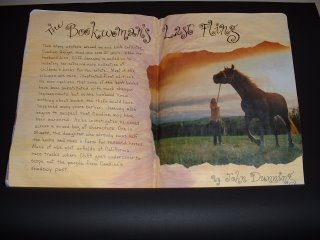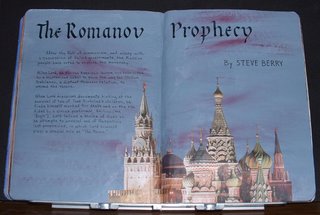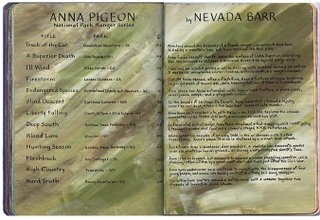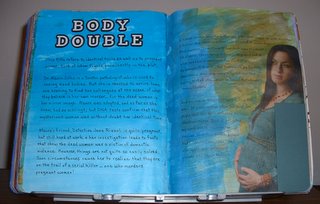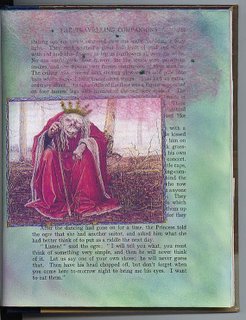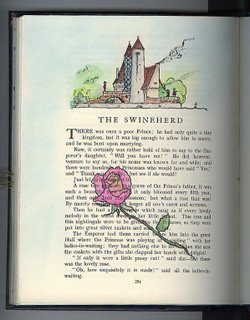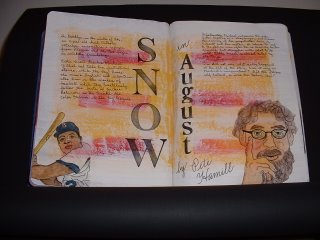
In Brooklyn, in the winter of 1946, an 11-year-old Irish Catholic altarboy encounters a refugee from Prague and the two begin an unlikely friendship. Rabbi Hirsch teaches Michael Yiddish and tells him fantastical stories, while the boy hones the man's English and indoctrinates him in the wonders of baseball while they breathlessly follow the feats of Jackie Robinson as he breaks the color barrier in the big leagues. Unfortunately, Michael witnesses the near fatal beating of a shopkeeper and draws the enmity of the perpetrator down on himself and his mother. He refuses to "rat" to the police even after he is severely beaten himself, but struggles with what to do until Rabbi Hirsch is almost killed by the thugs. I'm still not sure what really happened at the end of the story. Was it only in Michael's imagination? Did the Falcons self-destruct, or was the Golem real?
This is quite a different layout for me. As I've said more than once, I prepaint my pages...and honestly, some of them are so strange that I don't see how I'll ever use them for a book review. This is certainly one of the most unusual. I had painted the centers of the pages bright yellow and topped that with those six red swashes. When it was dry, I squirted a bit of cream paint around the edges and as it began to run out, dry-brushed it over the top of the yellow and red. Serendipitously, the hot colors turned out to be reminiscent of the sweltering summer at book's end, and the overlay of cream could be taken for snow.
The illustrations on this spread are another departure from what I normally do. My drawing skills are rudimentary, to say the least. I can't sketch anything without assistance. In this case, I found some photos on the web. Printed them off and laid a piece of tracing vellum on top. Using a waterproof Pitt pen, I traced the outlines of each. Then I laid on color with Derwent "Inktense" pencils and washed them with a Niji waterbrush. Once they were good and dry, I cut around the figures and ran them through the Xyron before applying them to the corners of the pages. Because the vellum is translucent, the colors of the background show through and the drawings appear to have been done directly on the pages.
